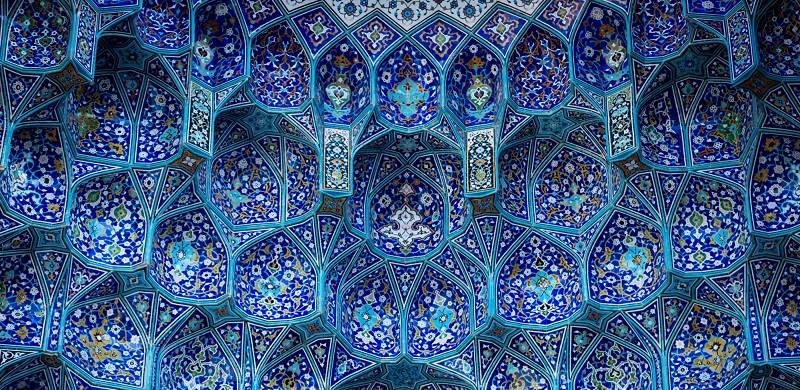
God, a word known to all humanity regardless of their position on the religious spectrum, remains incomprehensible to many. Despite being the Lord of all creation and Master of manifestation, God remains unseen to the flesh of human eyes with His unrevealed magnificence and unimaginable excellence. It is instinctively beyond the ability of human perception to capture the boundless glory of God – let alone begin to comprehend such realities with the human mind that is unreliable and subject to endless imperfections.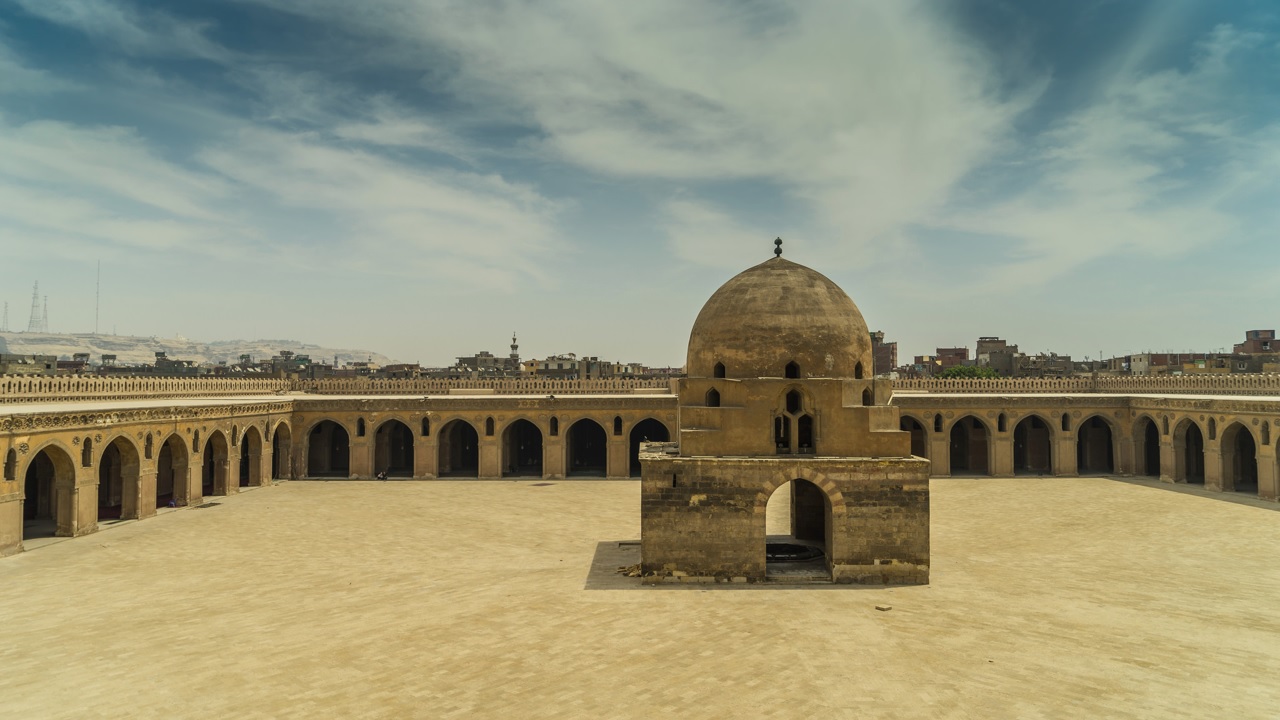
Islamic Art emerged as the ideal medium that not only bridged the vast distance of heavens between the Creator and the creation, but allowed mortal beings to visually witness the beauty of God by enriching their eyes through the marvels of Islamic crafts. For countless people, Islamic Art serves as the perfect sight for sore eyes that highlights and magnifies the greatness of the Almighty. Quite different from the one-dimensional approach to it that is common, Islamic Art is not simply the depiction of religion but also of culture and civilization – one that has navigated the course of history for more than 1,400 years. Islamic Art, which Seyyed Hossein Nasr describes as “the result of manifestation of Unity upon the plane of multiplicity,” is the aptest symbolism of the quintessential Islamic message because it is often more compelling and less baffling than the contemporary theological explanations of Islam. With its architectural fineness and religious eminence, Islamic Art serves as the felicitous tool to shape disfigured Muslim faith and rejuvenate our ability to distinguish between truth and falsehood on the one hand, and reflect God’s true beauty on the other.
Ranging from the Dome of Rock in Jerusalem to the Badshahi Masjid in Lahore, all reflect Islamic Art. The idea of beauty remains central not only to Islamic Arts but Islam itself. The sense of God's beauty and truth of revelation conveyed to us through each angle of these exceptional and glorious masterpieces is unrivaled and unparalleled. With their inward and imperative realities, these architectural treasures impel the individuals to have a closer look and thus a deeper level of understanding of the timeless art presented. The sense of sublimity and the critical elements like the spiritual and the ethical, all epitomized in the Quran term Ihsan, are immensely enlightened in Islamic Art, giving a true reflection of God's beauty. The magnanimous geometrical designs in these structures and other monuments of Islamic Art are undeniably awe-inspiring illustrations of God's beauty that allow us to see Him through the window of imagination (khayal). As cited, “God is Beautiful and loves beauty.”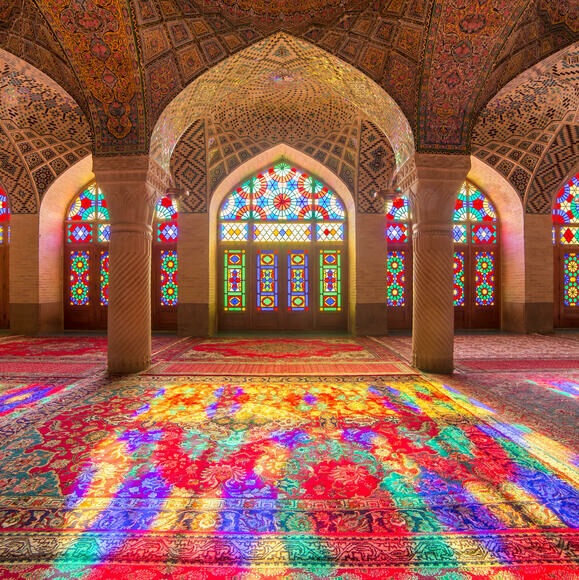
Furthermore, the imagination triggered by seeing Islamic Art's vigour is named barzakh. It prompts us to see the invisible world through the visible world's lens, thus tracing visual forms back to their hidden meaning. The subtle symbols in these finest works allow us to contemplate, meditate upon and 'see' aspects of invisible divinity, signifying that these pictures are solely the bright illustrations of God's beauty. As Abū al-Atāhiyah is quoted, “In everything, there is a sign that indicates that He is One.”
Consider the likes of the Nasir Al-Mulk Mosque or the Pink Mosque in Iran, that amalgamate various features like space, light and colour into geometric and archetypal realities that can more easily integrate into Divine unity and reflect God's beauty. Centralized on geometry and metaphysically transparent, imagination allows us to grasp the mysteries of transcendent divine unity and God's beauty inherent in these sensory forms.
For instance, the stained-glass windows that many Islamic Art edifices possess enable us to imagine the light of God in and through them. Like the infrangible bond between love and beauty, the connection between Jalal (divine majesty) and Jamal (divine beauty) is unshakable, making their co-existence in Islamic Art palpable. The allure and artistry evident in these various forms of Islamic Architecture not only causes Sakinah – intense peace stimulated by the awareness of God's presence – but reflects His eternal beauty, a prime feature of Islamic Art.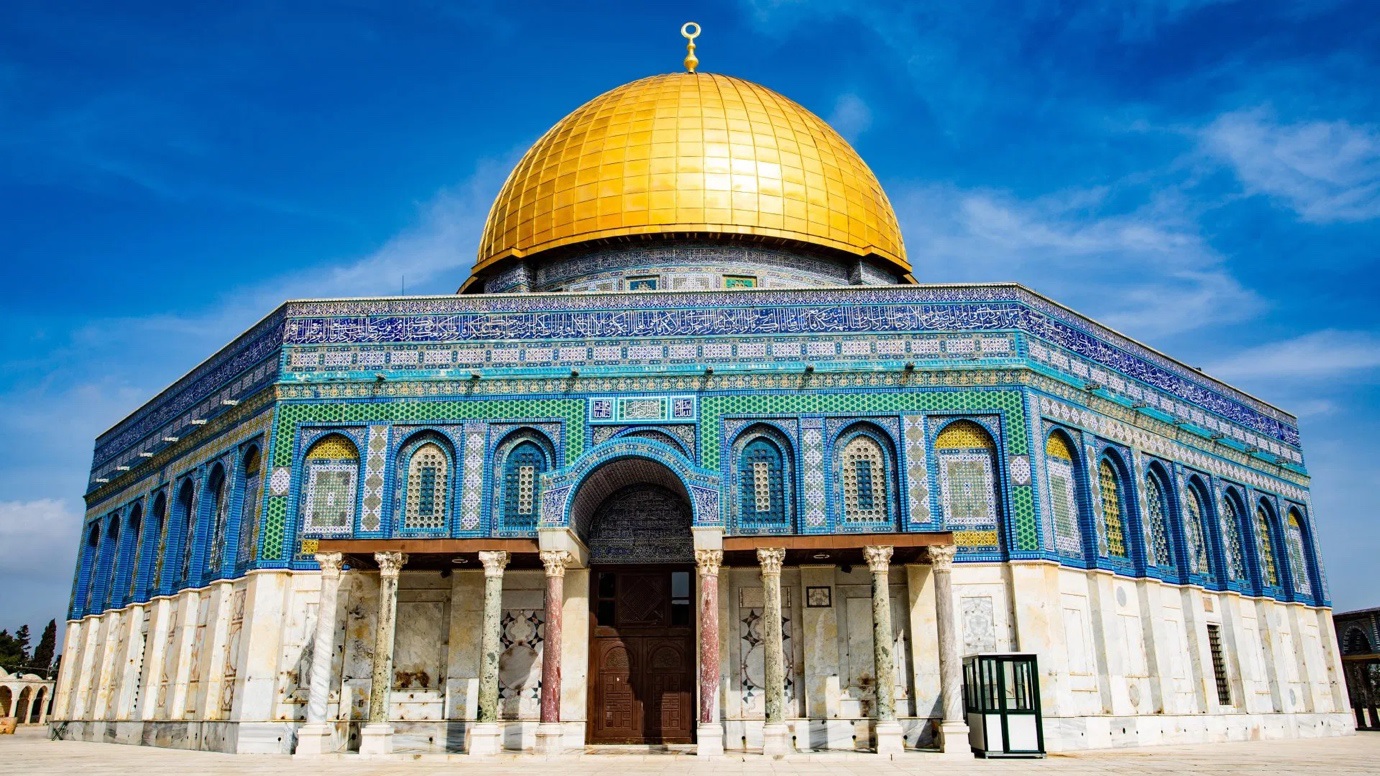 The tranquility and concord of the geometric designs encompassing the Barakah (sacred presence) of the space bolster our efforts to bring our souls in harmony and provide a true reflection of God's beauty.
The tranquility and concord of the geometric designs encompassing the Barakah (sacred presence) of the space bolster our efforts to bring our souls in harmony and provide a true reflection of God's beauty.
Unlike the temporary and flustering beauty of this corporeal world (Dunya), the beauty of God that Islamic Art tries to reflect is liberating and revitalizing. Despite fusing and employing different techniques manifested in diverse cultural landscapes and contexts, the distinct forms of Islamic Art are in mesmerizing coherence with each other – simply because the cornerstone of Islamic Art remains Divine revelation alone.
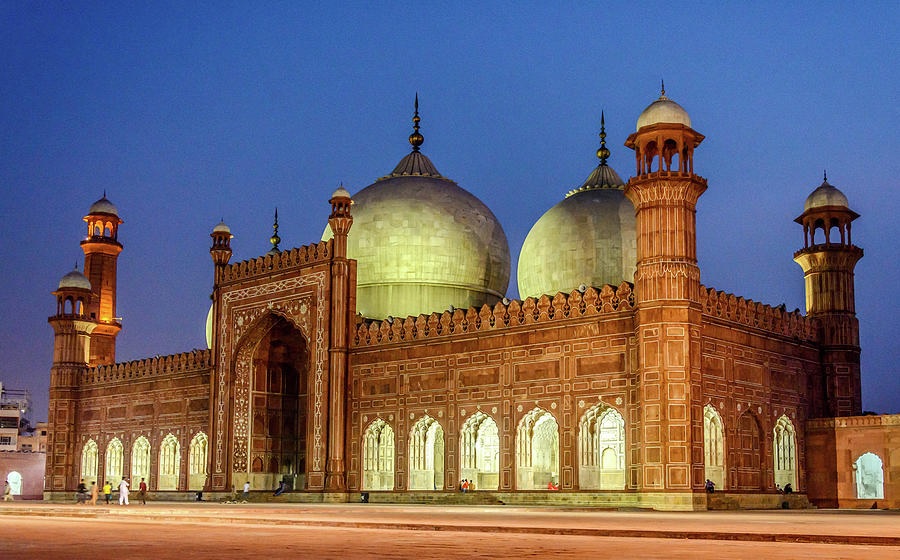 These works rely on a deep understanding of metaphysics and cosmology. They exhibit unity (tawhid) through rhythm, harmony and symmetry. The overlapping patterns that are symmetric and polycentric, coupled with geometric illumination patterns, reflect the Quranic manuscripts that inspire them. At the same time, the ambiance established through architecture revives the soul, rekindles the intellect and cultivates Islamic sciences sweeping the spectator off their feet in admiration for the beauty of God – a route to tranquility, appreciating the unseen splendour and dissociation from the material world with its chaos and confusion.
These works rely on a deep understanding of metaphysics and cosmology. They exhibit unity (tawhid) through rhythm, harmony and symmetry. The overlapping patterns that are symmetric and polycentric, coupled with geometric illumination patterns, reflect the Quranic manuscripts that inspire them. At the same time, the ambiance established through architecture revives the soul, rekindles the intellect and cultivates Islamic sciences sweeping the spectator off their feet in admiration for the beauty of God – a route to tranquility, appreciating the unseen splendour and dissociation from the material world with its chaos and confusion.

Islamic Art emerged as the ideal medium that not only bridged the vast distance of heavens between the Creator and the creation, but allowed mortal beings to visually witness the beauty of God by enriching their eyes through the marvels of Islamic crafts. For countless people, Islamic Art serves as the perfect sight for sore eyes that highlights and magnifies the greatness of the Almighty. Quite different from the one-dimensional approach to it that is common, Islamic Art is not simply the depiction of religion but also of culture and civilization – one that has navigated the course of history for more than 1,400 years. Islamic Art, which Seyyed Hossein Nasr describes as “the result of manifestation of Unity upon the plane of multiplicity,” is the aptest symbolism of the quintessential Islamic message because it is often more compelling and less baffling than the contemporary theological explanations of Islam. With its architectural fineness and religious eminence, Islamic Art serves as the felicitous tool to shape disfigured Muslim faith and rejuvenate our ability to distinguish between truth and falsehood on the one hand, and reflect God’s true beauty on the other.
Like the infrangible bond between love and beauty, the connection between Jalal (divine majesty) and Jamal (divine beauty) is unshakable, making their co-existence in Islamic Art palpable
Ranging from the Dome of Rock in Jerusalem to the Badshahi Masjid in Lahore, all reflect Islamic Art. The idea of beauty remains central not only to Islamic Arts but Islam itself. The sense of God's beauty and truth of revelation conveyed to us through each angle of these exceptional and glorious masterpieces is unrivaled and unparalleled. With their inward and imperative realities, these architectural treasures impel the individuals to have a closer look and thus a deeper level of understanding of the timeless art presented. The sense of sublimity and the critical elements like the spiritual and the ethical, all epitomized in the Quran term Ihsan, are immensely enlightened in Islamic Art, giving a true reflection of God's beauty. The magnanimous geometrical designs in these structures and other monuments of Islamic Art are undeniably awe-inspiring illustrations of God's beauty that allow us to see Him through the window of imagination (khayal). As cited, “God is Beautiful and loves beauty.”

Furthermore, the imagination triggered by seeing Islamic Art's vigour is named barzakh. It prompts us to see the invisible world through the visible world's lens, thus tracing visual forms back to their hidden meaning. The subtle symbols in these finest works allow us to contemplate, meditate upon and 'see' aspects of invisible divinity, signifying that these pictures are solely the bright illustrations of God's beauty. As Abū al-Atāhiyah is quoted, “In everything, there is a sign that indicates that He is One.”
Consider the likes of the Nasir Al-Mulk Mosque or the Pink Mosque in Iran, that amalgamate various features like space, light and colour into geometric and archetypal realities that can more easily integrate into Divine unity and reflect God's beauty. Centralized on geometry and metaphysically transparent, imagination allows us to grasp the mysteries of transcendent divine unity and God's beauty inherent in these sensory forms.
Islamic Art, which Seyyed Hossein Nasr describes as “the result of manifestation of Unity upon the plane of multiplicity,” is the aptest symbolism of the quintessential Islamic message
For instance, the stained-glass windows that many Islamic Art edifices possess enable us to imagine the light of God in and through them. Like the infrangible bond between love and beauty, the connection between Jalal (divine majesty) and Jamal (divine beauty) is unshakable, making their co-existence in Islamic Art palpable. The allure and artistry evident in these various forms of Islamic Architecture not only causes Sakinah – intense peace stimulated by the awareness of God's presence – but reflects His eternal beauty, a prime feature of Islamic Art.
 The tranquility and concord of the geometric designs encompassing the Barakah (sacred presence) of the space bolster our efforts to bring our souls in harmony and provide a true reflection of God's beauty.
The tranquility and concord of the geometric designs encompassing the Barakah (sacred presence) of the space bolster our efforts to bring our souls in harmony and provide a true reflection of God's beauty.Unlike the temporary and flustering beauty of this corporeal world (Dunya), the beauty of God that Islamic Art tries to reflect is liberating and revitalizing. Despite fusing and employing different techniques manifested in diverse cultural landscapes and contexts, the distinct forms of Islamic Art are in mesmerizing coherence with each other – simply because the cornerstone of Islamic Art remains Divine revelation alone.
 These works rely on a deep understanding of metaphysics and cosmology. They exhibit unity (tawhid) through rhythm, harmony and symmetry. The overlapping patterns that are symmetric and polycentric, coupled with geometric illumination patterns, reflect the Quranic manuscripts that inspire them. At the same time, the ambiance established through architecture revives the soul, rekindles the intellect and cultivates Islamic sciences sweeping the spectator off their feet in admiration for the beauty of God – a route to tranquility, appreciating the unseen splendour and dissociation from the material world with its chaos and confusion.
These works rely on a deep understanding of metaphysics and cosmology. They exhibit unity (tawhid) through rhythm, harmony and symmetry. The overlapping patterns that are symmetric and polycentric, coupled with geometric illumination patterns, reflect the Quranic manuscripts that inspire them. At the same time, the ambiance established through architecture revives the soul, rekindles the intellect and cultivates Islamic sciences sweeping the spectator off their feet in admiration for the beauty of God – a route to tranquility, appreciating the unseen splendour and dissociation from the material world with its chaos and confusion. 
